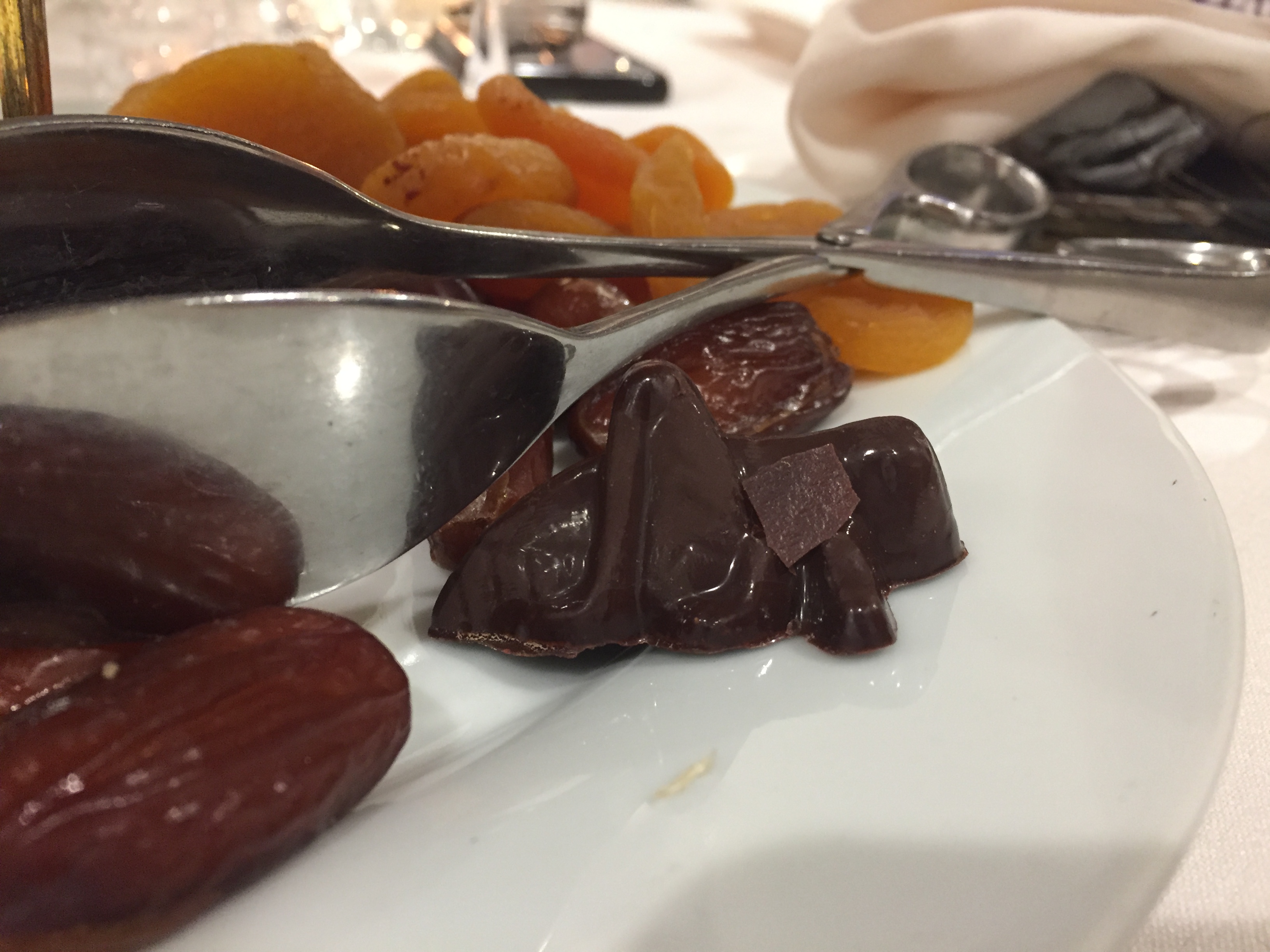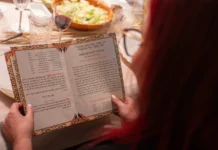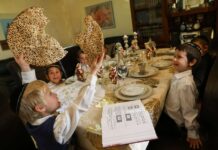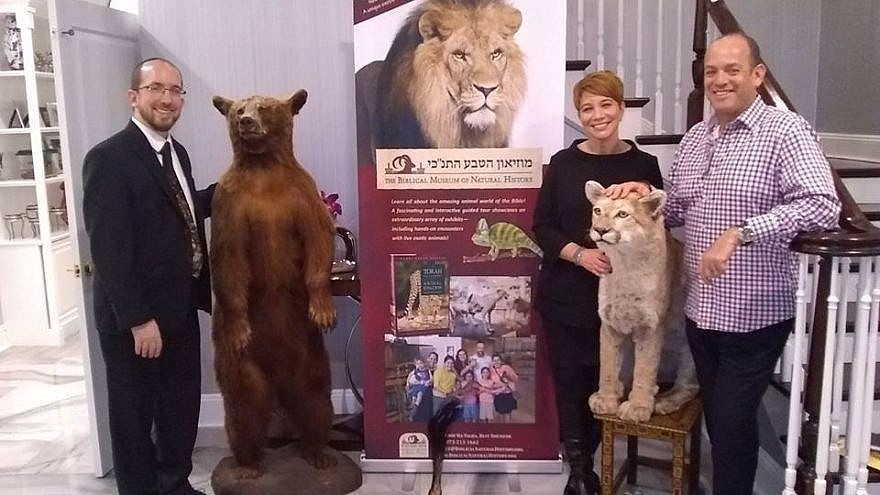It has always been important for Jews to write down recipes from our mothers and grandmothers, and serve those precious treats to our own children. Jewish foods are part of our mesorah, our historic oral tradition—as holy, often, as the Torah itself.
Now let’s take it a step further. How do we know what meats are part of our mesorah, which animals and which breeds are considered kosher, and how do we know the steps to slaughtering them all in a kosher manner? It’s not all written down in our holy books, as the laws of shechita (ritual slaughter), like the Talmud, must be passed down by people as well. There must be an unbroken line from one shochet (ritual slaughterer) to the next, one generation to another. Otherwise, the mesorah is lost forever.

Rabbi Dr. Natan Slifkin, an Israel-based rabbi/zoologist and author, popularly known as “the Zoo Rabbi,” is the creator of a now four-year-old Biblical Museum of Natural History in Beit Shemesh that celebrates the animals mentioned in the Bible, displaying many of them as well. (Slifkin is also well-known as a blogger focusing on rationalism and creation. Some of his books have been banned by haredi communities, who cited his work as heretical due to his references to evolutionary biology, his suggesting that the six days of creation were not literal days and his offering of scientific conclusions that override the words of Jewish sages.)
The museum, however, now a part of Israel’s cultural landscape, caters to every type of visitor to Israel, and in fact welcomes many from the ultra-Orthodox world. In fact, it’s part-zoo, part-natural-history museum and part-educational center. He is committed primarily to providing Jewish education regarding the natural world and to show that Judaism is a living religion, as vibrant today as it was in the days of Abraham and Sarah, all the way down to their living ancestors: ourselves.
While it may not be one of his primary motivations, Slifkin’s hosting of high-priced “exotic animal dinners,” of which he has three rotating menus (biblical, non-biblical and legends from the sea), have generated quite a bit of excitement around, and interest in, his museum.
Of birds and beasts
Curiosity abounds. It seems that many people are interested, for a wide array of reasons, in keeping alive the treasure of the mesorah of more exotic kosher animals—those that are kosher but have either become less available or fallen out of favor, for one reason or another. Some of these foods were eaten at the “Biblical Feast of Birds and Beasts” in Teaneck, N.J., this past Sunday evening, which welcomed a packed group of 70 enthusiastic diners, with many paying as much as $500 a plate. “Biblical food is a totally new aspect of Jewish identity,” said Slifkin, commenting on the wide variety of guests attending, whether they were there as museum supporters, kosher foodies or those who had just come for the spectacle.
Rabbi Daniel Senter, the rabbinic administrator for the Kof-K kosher supervisory agency, personally supervised the meal, which was prepared by W Kosher Catering, based in the Five Towns. Senter explained that his role, in this case, involved sourcing exotic animals for the dinner, and noted that everything served at the meal, however unusual it sounded, had an unbroken history of shechita.

Those who came to the Oct. 21 meal expecting to eat giraffe or locusts, however, were destined to go home disappointed. But isn’t there an issue about where on the neck to shocht the giraffe? “That’s a myth,” Slifkin told the group. “Giraffe is kosher. We don’t eat them because they’re an endangered species. People would get very upset.”
The foods served were not so much endangered as out of fashion, or economically unviable, for kosher consumers. So rarely, Slifkin explained, was venison suitable for kosher shechita (they have to be captured, not shot), that there was only one such supplier available for this gathering, in Upstate New York. At one point, the supplier decided not to sell his deer to Slifkin but to a regular customer instead (though he relented after he was offered an extra $100 per animal). Slifkin also shared that some of the goats he was going to serve ended up coughing, and on inspection, were discovered to have unclean lungs (not kosher), so he had to find others.
He also told the assembled that he dearly wanted to serve locusts, as he had at a prior dinner he hosted with a similar menu in Beit Shemesh (they’re pareve, like fish), but he couldn’t because they’re not certified kosher according to the Kof-K. Instead, he replaced them with molded “chocolate locusts” on the dessert plates—making the distinction, albeit slyly, that they were not, in fact, “chocolate-covered locusts.”
The meal itself
After an appetizer of matzah with za’atar (Bible hyssop) and focaccia studded with olives, Slifkin explained that matzah in the Bible was not the hard Manischewitz cracker so many American Jews are used to, but a soft, pillowy bread similar to pita or laffa. The hors d’oeuvres included a roasted slice of goose with a citrus glaze and a whole grilled quail, paired with a subtle pomegranate sauce. The quail—tender, delicate and smaller than can be believed—was beautifully prepared and sauced. Slifkin introduced the group to a remaining live, beautifully feathered bird, as he introduced the course.
Max Schachter, 11, who came to the meal with his father and older brother, picked up the tiny bird in his hands, like many of the other diners, and left just a pile of featherweight bones on his plate. Another diner confided that he had eaten the bones—and found them delicious.
“These quails have lived better lives than any chicken you’ve ever eaten,” Slifkin told me, noting the disparaging conditions of today’s slaughterhouses. “Chickens are basically bred to be so large they can’t even support their own weight.”

Next up was the savory and delicate “dove” soup, which tasted to some like turkey or duck.
“Rabbi Slifkin said he would tell us a little more about the soup after we ate it,” said Elan Kornblum, a longtime kosher-restaurant magazine editor and creator of “Great Kosher Restaurant Foodies,” a Facebook page with more than 48,000 followers. “He then let us on to a secret that what we ate wasn’t exactly dove but pigeon, which he said was essentially the same bird and easier to get. It had the consistency of liver, but tasted a little like duck. It was interesting.”
The main course included goat ragout with a fresh homemade, flat tagliatelle-style pasta with red sauce. This was the gamiest-tasting meat of the night, and the most grisly. Some at the table said they understood why it was served most often with strongly flavor jerk seasoning in Jamaican and other ethnic dishes, to perhaps break down the meat’s connective tissues and cover its distinctive flavor. The tomato sauce was somewhat effective in this regard, but did allow the flavor to come through.
The goat was served alongside a delicate venison, prepared and served like a medium-rare steak. It tasted quite a bit like one as well. For many, the venison was the best bite of the night.
“All in all, it was a very classy dinner, where everyone enjoyed learning about the animals, the biblical history and more about the museum, which is trying to raise funds to open in a new, bigger location,” said Kornblum. To continue raising funds—and to continue on his mission of education in biblical foods—Slifkin will be putting on another such dinner in March in Los Angeles.
“Simply put, the building has many limitations, especially with regard to capacity,” said Slifkin, noting that during school holidays, the museum ceases doing publicity and has to turn away customers due to space constraints, adding that the museum just welcomed its 50,000th visitor. “In 2019, we are moving to a new, beautiful and vastly larger home. … We will display more and superior exhibits, and there will also be classrooms and opportunities for a variety of additional programs.”


























